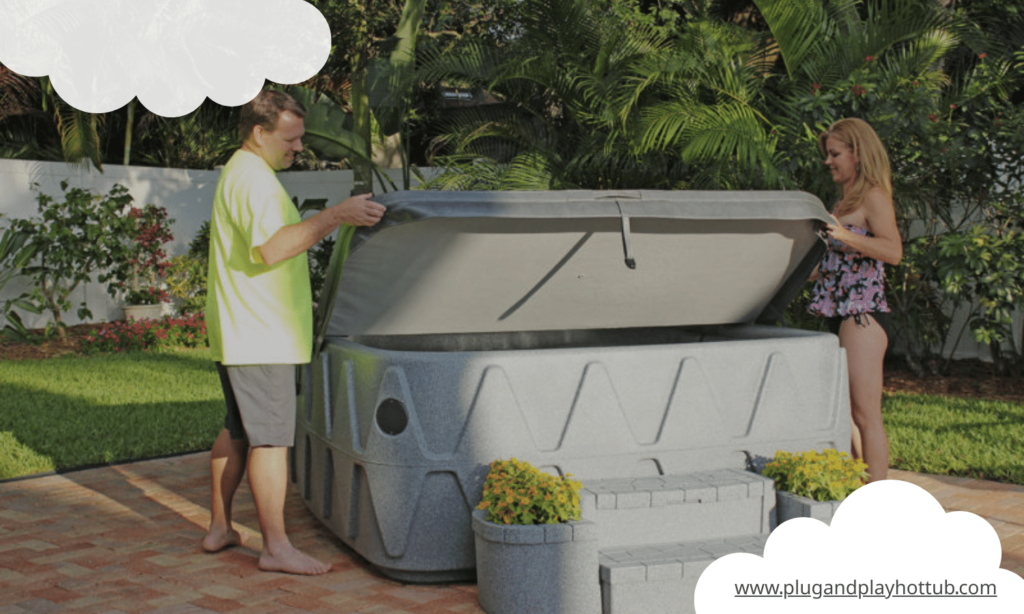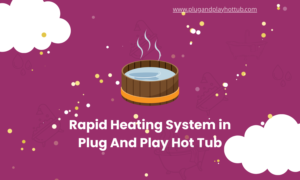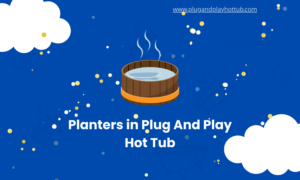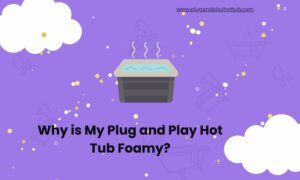
Plug and play hot tubs provide the ultimate in relaxation and hydrotherapy massage with the convenience of portability and quick setup. A key component that makes these self-contained spas possible is the built-in pump system specifically designed for hot tub circulation and jet power.
Understanding how these specialized pumps work and proper maintenance is essential to promote optimal performance and longevity from your investment.
In the following article, we will explore common pump types utilized in portable hot tubs, power supply requirements, routine maintenance needs, and general life expectancy with proper care.
Learning key details about your hot tub pump facilitates ease of use and assists in identifying and troubleshooting issues should problems arise. Investing a little time into pump awareness equals years of reliable soothing massage enjoyment with minimal hassles.
What kind of pump does it use?
Plug and play hot tubs utilize a specialized pump designed specifically for portable spas. These pumps circulate water through the hot tub’s jet and filtration system. The most common types of pumps used in portable hot tubs are small jet pumps and air pumps.
Jet pumps work similarly to standard pumps but on a smaller scale. They pull water from the hot tub, push it through the filtration system and heater, then return the water at a high velocity out the jets to create the massage effect. Jet pumps are powered by electric motors and are typically single-speed or two-speed depending on the hot tub model.
Air pumps inject air into the water lines to boost the strength of the jets. Venturi air controls built into the jets allow air and water to mix, creating more powerful streams of bubbles. Air pumps run independently or can work in conjunction with jet pumps.
How is the pump powered?
Plug and play hot tub pumps directly into a dedicated 220-volt electrical outlet through a GFCI-protected cord attached to the hot tub. This eliminates the need for any complex wiring, allowing for true plug-and-play functionality.
The pump draws power from the 220v outlet to drive the electric motor and water circulation system. A ground-fault circuit interrupter (GFCI) provides protection against electric shock by shutting off power if electricity leaks into the water.
The built-in cord winds neatly into a special compartment when not in use. During set up, the cord simply plugs into a properly installed outdoor 220v outlet with enough amps and wiring to support the electrical load of the hot tub pump and heater.
What maintenance does the pump require?
Regular maintenance is essential for optimal pump performance and longevity. Routine maintenance tasks include:
- Checking and replacing hot tub filters as needed, generally every 2-4 weeks depending on use. Clogged filters put a strain on the pump.
- Removing and cleaning out any debris or calcium deposits in the pump impeller housing using a specialty spa vacuum.
- Lubricating the pump seal and other components with spa pump lubricant to prevent overheating and reduce noise.
- Checking supply lines and tightening all plumbing fittings to prevent air leaks that can cause the pump to lose prime.
- Testing water chemistry and adding chemicals as necessary to maintain proper pH, alkalinity, and calcium hardness which helps prevent scale buildup.
- Draining and refilling hot tub water 3-4 times per year removes dissolved solids that are tough on pumps.
How long should the pump last?
With proper installation, use, and routine maintenance, a quality hot tub pump should last approximately 5 years before needing repair or replacement. Harsh water conditions caused by improper chemical balances can erode pump components like seals and impellers, shortening lifespan.
Hot tub pumps contain both electrical components and water-cooled elements that wear out over time. Catching problems early and conducting preventative maintenance allows maximum pump life expectancy.
Signs that the pump may need service include increased noise, difficulty priming, reduced jet power, leaking seals, error codes, or the pump simply failing to turn on. Contact the hot tub manufacturer for troubleshooting advice or to order replacement parts.
Investing in a premium efficient pump, following usage guidelines, testing water regularly, and performing maintenance ensures your hot tub pump circulates clean, heated water for years of reliable hot tub enjoyment.
Conclusion
Your plug and play hot tub pump is the heart of your spa, circulating heated, jetted water at the touch of a button. While self-contained hot tub units eliminate complex installations, it remains vital to conduct regular maintenance and water testing to avoid premature breakdowns. Ensuring your pump runs efficiently with adequate flow and pressure optimizes the hydrotherapy experience.
Understanding pump configurations, electricity requirements, maintenance directives, and estimated operational lifespans prepares hot tub owners for best usage practices. Identifying warning signs of potential problems allows early diagnosis and repair to maximize longevity.
With the proper care, a quality pump designed specifically for portable spa use will provide up to 5 years of soothing water massage. Investing a little effort into pump awareness provides the ultimate payoff of reliable relaxation for years. Our bodies and minds thank us for prioritizing self-care on demand in the comfort of our home oasis.



